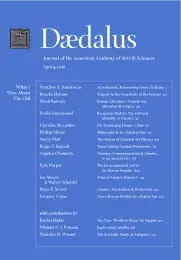Reception Studies: The Cultural Mobility of Classics
In spite of connotations of classics and the classical as an established tradition based around a stable canon, Greek and Roman classical antiquity has never been a fixed object of study. It has changed as our knowledge of ancient Greece and Rome has grown and shifted, and as a function of history, intellectual movements, and taste. Classicists have turned to classical reception studies in an attempt to chart some of the different encounters that various historical audiences have had with Greek and Roman classics, and this wave of research poses interdisciplinary questions about the relation of Greek and Roman classics to world literatures and cultures. The emphasis on classical reception studies offers fresh ways of thinking about the cultural mobility of the classics without appealing to discredited, old-fashioned notions of “timeless importance” or “universal value.” This debate is explored here via a Malawian reception of Sophocles’s Antigone.
By its very name, the term classics proclaims that a select body of works from antiquity is perpetually new. Here I am thinking less of Ezra Pound’s dictum in ABC of Reading that “literature is news that STAYS new,” and instead of a remark made by Plutarch, a polymath from Boeotia in central Greece and a subject of the Roman empire.1 In his Life of Pericles, written early in the second century CE, Plutarch writes admiringly of the architecture of the buildings on the Athenian Acropolis, built in the third quarter of the fifth century BCE. For Plutarch, the striking quality of these buildings was that, at the time of construction, they were instantly antique, and yet in Plutarch’s day (over five hundred years later) they remained fresh and new.
Each one of them, in its beauty, was even then and at once antique [archaios]; but in the freshness of its vigour it is, even to the present day, recent [prosphatos] and newly wrought [neourgos]. Such is the bloom of perpetual newness [kainotēs], as it were, upon these works of his, which makes them ever to look untouched by time, as though the unfaltering breath of an ageless spirit had been infused into them.2
(Plutarch Life of Pericles 13.3, trans. Bernadotte Perrin)
All of us in the academy would like to claim the bloom of perpetual newness for our disciplines. In the case of classics, this old-newness is written into our self-naming, with classics and the classical shorthand for a complex process of classicization that has gone into defining the transcultural and transhistorical value of works from Greek and Roman antiquity. . . .
